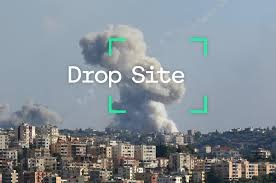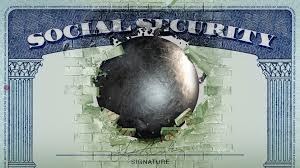Events in the Middle East are moving very rapidly. We have seen the pager attacks, the massive bombing of Lebanon, and now the assassination of Hassan Nasrallah. The purpose of this article is to discuss Israel’s fundamental objectives in this new situation.
One year on
We should begin with the almost one year old Israeli offensive in Gaza. The Israeli Defense Force has been able to exact a massive toll from the Palestinian people. The Lancet, a highly respected British medical journal, estimates there are 186,000 dead. (This would correspond to about 28 million dead in a country the size of the United States.) It’s extremely ominous that Israel is now demanding lasting military control of the Philadelphi Corridor. This is the strip of land between Gaza and Egypt. It’s the only contact Gazans have with the rest of the world. IDF control would effectively close off Gaza. The infrastructure of daily life in Gaza has been pulverized. Even if the war stopped today, it would take a generation to rebuild a functioning society.
The Israeli regime gained substantial momentum and political self-confidence from the domestic and international horror at the October 7 attack. This created a head of steam that legitimized and powered the offensive in Gaza. This forward motion is now petering out.
Despite the genocidal onslaught, Israel has not accomplished its stated goals. Hamas, though bloodied, is still functioning. This can be seen from the fact that fighting continues in territory that Israel has already invaded. Only a small number of hostages have actually been freed by Israeli forces. Politically, Netanyahu has been faced with substantial internal opposition from the hostage families’ movements. Internationally, the Israeli campaign has faced significant criticism from other ruling classes. The international solidarity movement with Palestine has been the most sustained left-wing campaign in half a century.
The Netanyahu government needs to get back to the situation that it was in just after October 7: significant international and domestic support, a groundswell of chauvinist unity inside of Israel, and a united and vigorous military. Why does it need to rebuild this sense of purpose and direction? Why can’t it rest on its laurels after the destruction of Gaza? To answer these questions, we have to go to the heart of the overall Zionist project.
The aim of Zionism is the removal of all Palestinians from “Eretz Israel”, the land seen as the historic Jewish homeland. Palestinian removal is the fundamental overarching goal of all Israeli policy. Now, such a huge act of ethnic cleansing cannot be done easily. Seven million Palestinians cannot be expelled quietly and incrementally. The mobilization and vortex of a war is the best condition for moving forward with Palestinian expulsion. This is exactly what happened with the original 1948 Nakba at the time of the establishment of the state of Israel. It’s what happened in 1967 with the Six Day War that led to the seizing of the West Bank, Golan Heights, and Gaza strip. Creating another wave of Palestinian migration has been the basic objective of this year’s campaign in Gaza.
If Israel is to be successful in its historic aim of removing all Palestinians “from the river to the sea”, it needs a new shot in the arm. The dynamism that followed October 7 has run its course. A reboot is needed. This is the number one reason for the recent attacks on Hezbollah and Lebanon.
“Center of gravity is moving north”
From this vantage point, recent events fall into place. Israeli Defense Minister Yoav Gallant has said, “The center of gravity is moving north.” He meant that Lebanon will now be the new priority. The Israeli military has taken a number of major steps to implement this perspective. First, there was the September 17 and 18 Mossad detonation of the pagers and walkie-talkies of Hezbollah cadre. Israel had placed small amounts of explosives inside these communication devices while they were in transit to the Hezbollah. Radio detonation took place over a two-day period, first with the pagers and then with the walkie-talkies. Forty-two people were killed and 3,500 injured. It was a clear military success for the Israeli offensive.
The next several days saw waves of Israeli bombing across southern Lebanon, reaching as far north as the Beirut suburbs. The Lebanese Health Minister said that 1,030 people were killed in these attacks. There have been the same spurious cover stories that the bombed homes were really military facilities that we’ve heard a hundred times during the invasion of Gaza. In fact, this type of bombing is often the “softening-up” process prior to a ground invasion or at least creating the fear of one. The huge scale of this operation can be seen by the fact that there were 140 sorties on the morning of Saturday, September 28 alone. There are now more than 200,000 refugees created by the Israeli offensive.
The September 27 killing of Hassan Nasrallah is the centerpiece of the new Israeli campaign. Nasrallah was the very well-known main leader of the Hezbollah. Finding his exact location at a specific time was a real intelligence coup for the Israelis. Of course, injuring almost a hundred people and destroying six apartment buildings is seen by the Israeli government as quite acceptable “collateral damage”.
For some years now, the Israeli Defense Force has used an operational tactic known as the “Dahiya Doctrine”. This policy proposes the massive destruction of civilian areas as a way of bringing pressure to bear on a military opponent. Now the “Dahiya Doctrine” is literally being used in Dahiya. Dahiya is the Beirut suburb where the Nasrallah attack and a number of other Israeli bombings have taken place. If there’s such a thing as genocidal irony, this is it.
A land invasion of southern Lebanon is certainly a very real possibility, but not a complete certainty. Israel has certainly been talking up this possibility. They have allowed journalists to attend pep talks given by the high command to prepare soldiers for this eventuality.
However, part of Israeli strategy is probing to see the response of its enemies. So far, the Hezbollah response has been within the previously established framework, that is relatively low-key rocket attacks. The big “known unknown” is Iran’s response.
Israel has been goading Iran for some time. The July assassination of Hamas leader Ismail Haniyeh in an Iranian government building just after he had attended the Presidential inauguration is a provocation among provocations. But it’s only one of the attacks that Israel has made on Iran and its allies. So far, Tehran’s response has been very restrained and self-disciplined. Iran does not want greater Middle East conflagration. It wants just the opposite, the lifting of sanctions and Iran’s integration into the world capitalist system. So, Iran has had to put up with Israeli military taunting.
On the other hand, Israel certainly wants a war with Iran. Israel wishes to remove a key enemy, draw the United States further into Middle Eastern confrontations, and have a cover for further ethnic cleansing of Palestinians. The next chapters in this story have not yet been written.
Has the Israeli offensive caught a second wind?
How successful has Israel been in its new project of extending the Gaza war to Lebanon? A very pro-Netanyahu article in The Times of Israel provides a clue. David Horovitz writes, “…the IDF on Friday evening took its most significant step yet toward reasserting its military primacy and reassuring Israel’s battered citizens that it can protect them from its enemies.”
Speaking of Iran, Horovitz writes, “Or does it risk further escalation against a revitalizing Israeli military and an Israeli political echelon whose threats it evidently needs to take more seriously?” He concludes his article, “But Friday’s elimination of Hassan Nasrallah underlined that the military, which did acknowledge its failures and investigate them, has learned from them and is recovering its dominance. It is Hezbollah that has proved arrogant and overconfident, and its masters in Iran that are shaken now.”
Recent Israeli polls have put Netanyahu’s Likud Party as the largest party if an election were held today. It’s important to note that important figures such as Benny Gantz, Yoav Gallant and Daniel Hagari, seen by the world press as the more reasonable “adults in the room” are solid in their support of the new turn to the North.
Once one places the long-term Zionist project as the key factor explaining the attacks on Lebanon, other secondary factors fall into their rightful place. Netanyahu does stand to personally gain from the escalation as it prolongs his term in office and thus postpones criminal charges. The Israeli leader probably would like to give his friend Donald Trump an “October Surprise” with a new war. His reckoning is that Kamala Harris would support an expansion of the war. (He’s right about that!) Netanyahu may well speculate that Harris’s position would cost her among Arab Americans and young voters and thus help Trump win. But the key point is that the Israeli ruling class would not sanction an operation based solely on Netanyahu’s personal needs. The Israeli ruling class supports the attacks on Hezbollah because they are good for its overall project. If the attack’s repercussions are personally good for the Prime Minister, that’s just an added bonus for him.
Our eyes should be on the situation in the West Bank. The West Bank is the indicated next step for the Israeli expulsion of the Palestinians. Gaza has been devastated. This process will need to be extended to the West Bank if Israel is able to continue its history of ethnic cleansing against the Palestinians successfully. Obviously, weakening Hezbollah is an important goal for the Israeli leadership. But the destruction of Palestinian society on the West Bank is also a major goal. Using the momentum of the war against Lebanon to launch an offensive against the West Bank is crucial to Israeli strategy. That’s why we can say that, for Israel, the road to Nabulus and Ramallah lies through the Bekka Valley.
The current situation in the Middle East is murky and rapidly evolving. Our tasks, however, are extremely clear and straightforward. Building the Palestine solidarity movement is a central priority for revolutionary socialists today. In this regard, the international demonstrations called for October 5 are at center stage.




